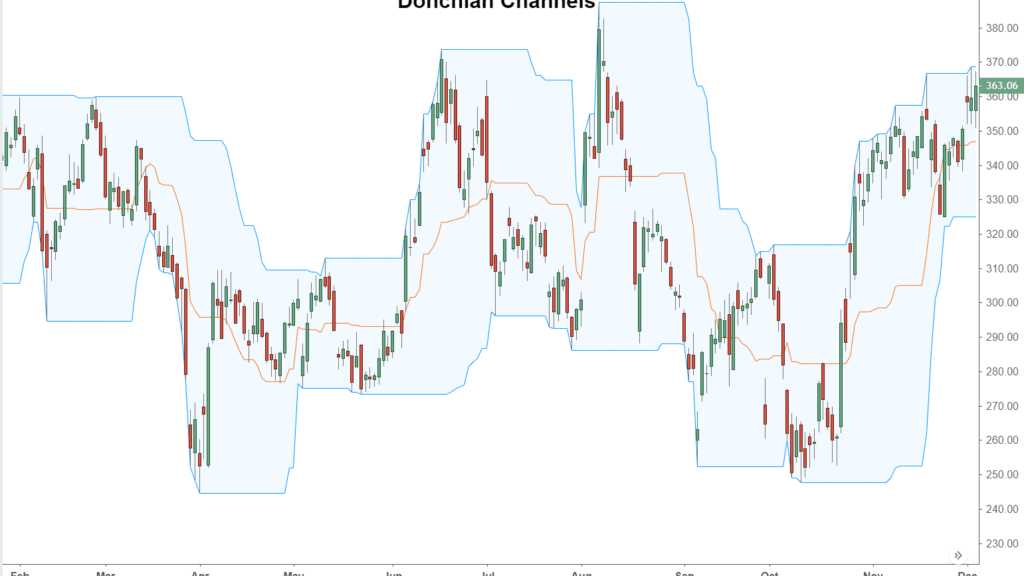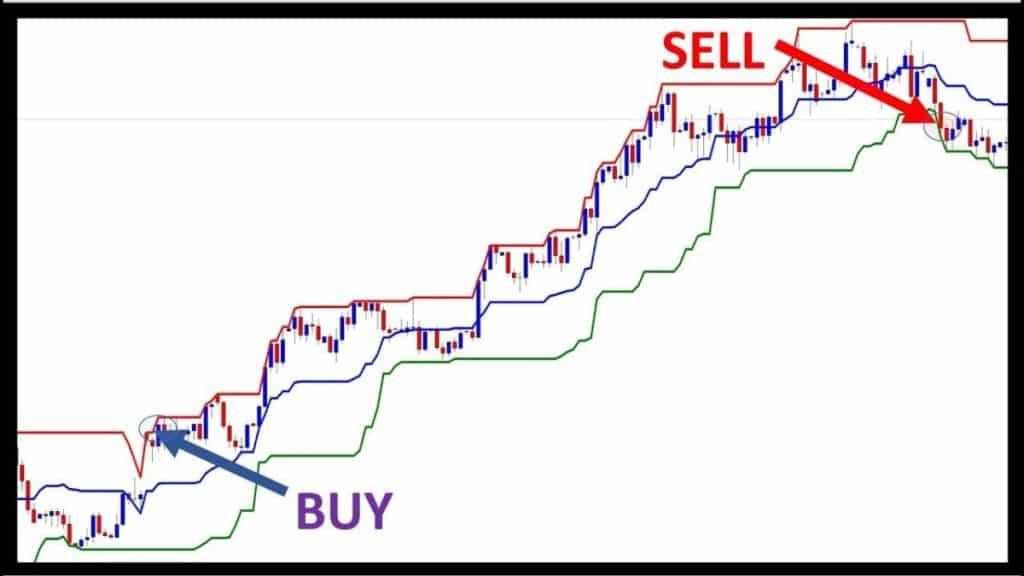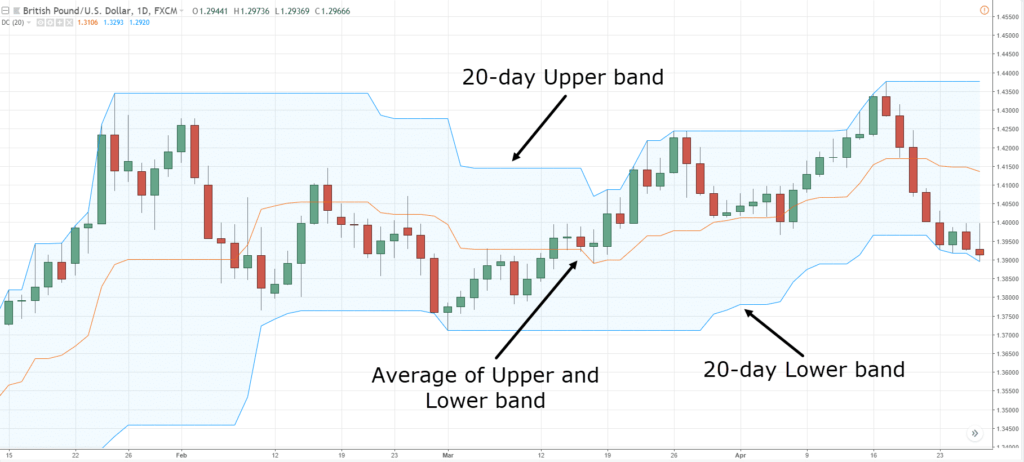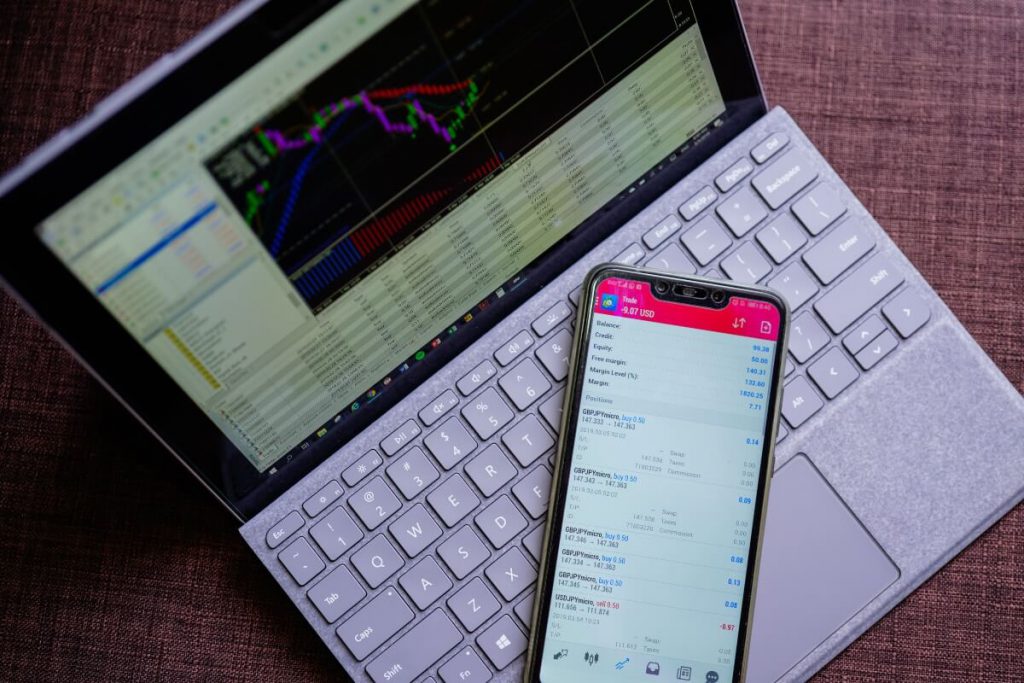
Donchian Channel – for Breakout And Trend-Following Traders
Have you ever thought about what does donchian channel represents in trading? Why are more and more devoted traders choosing the donchian channel indicator to be their ace up their sleeve while trading on the market?
It’s no wonder that enthusiastic individuals worldwide are looking for new ways, strategies, and indicators to help them achieve their trading goals. There certainly are many reasons why Donchian channels and donchian channel strategy are among the most common choices of numerous breakout and trend-following traders.
For all those who have heard of something like this for the first time, our task is to introduce you to the famous channel that will be significant for every trader interested in increasing their profits on the market. Shall we get started with the basic explanation of these channels?
What does the Donchian channel represent?
Donchian channel represents a trend-following indicator that measures both the high and the low of a previously defined range. That range is typically about 20 days, meaning that it marks all the highs and lows of a 20-day period.
In most cases, a trader will look for a well-defined range and wait for the price to break out to either side for a trade entry trigger. These channels are heavily used to represent the following:
- Breakouts
- Volatility
- Potential oversold-overbought conditions for security.
The system utilizes elastic bands that are sited equally to the period’s lowest lows and highest highs across a moving average. When used with other technical indicators, the channel upper and lower bounds form effective resistance and support levels.
What do Donchian trading systems use most often?
Donchian trading systems are primarily using a four or five-week moving average line. It means that the ordinary analysis of the channel is waiting to spot a point where the price of security breaks through either the upper or lower band. At this point, a trader will enter into either a short or long position.
To understand this better, it’s essential to consider one particular situation. For example, once the price outstrips the previous four weeks, the majority go long and thus cover their short positions.
Understanding Donchian channels

The Donchian channel, created by Richard Donchian, actually plots the line at the asset’s high and low price over a ser period of time. Usually, it uses candlesticks as a timepiece. The name “Candlesticks” was given so because of their shape. These are plot areas on charts that demonstrate the following things:
- The open price
- High price
- Low price
- Close price
- The time frame of a given stock
While applying the Donchian channel indicator to a chart, expect the lines to form a channel around the most current price.
How do these channels work exactly?
In order to truly understand how these channels work, it’s essential to note that three bands show the current market momentum.
Logically, the lowest low is represented by the lower band, while the upper band represents the highest high. The middle band, or as someone refers to it, a “mid-band”, stands for an average of both the current low and current high for that trading period.
What are the Donchian Channels useful for?
When it comes to their usefulness, Donchian channels are primarily helpful for highlighting:
- Trends
- Ranging periods while day trading
Besides that, there’s also the option of adding a third line between the upper and lower lines. Remember that the so-called mid-band represents an average of the upper and lower channel lines.
How does the indicator function?

The indicator functions on all time frames, like five-minute or even one-minute charts, and it applies to:
- Stocks
- Forex
- Futures markets
- Options
How to trade Donchian channels?
A significant number of breakout traders and trend-following traders choose to use the mid-line of the Donchian channel, primarily as an indicator of when it is time to open or close a position. In most cases, if the price moves above the middle line, traders are expected to open a short position.
On the other hand, traders will keep long positions until the price of an asset hits the upper band. When it manages to do so, there’s a choice to be made for them. In case the price manages to hit the upper band but doesn’t break through breakout trades, most traders will go for closing their long positions and opening a short position.
They expect the bullish trend to eventually reverse and then turn bearish back towards the middle line.
What if the price breaks through the upper band?

In the situation where the price breaks through the upper band, traders should expect a bullish rally in which the asset’s price will likely increase to climb for some time. If this happens, numerous traders will choose to keep their long positions open.
Usually, traders do this only if the asset is consistently closing above the upper band. It’s because they would like to avoid the possibility of trading a false breakout.
Once traders choose to trade with Donchian channels, stop orders are able to help protect a position against bearish reversals against the so-called “bullish trend”.
Trade in the Donchian channel during a bearish trend is something that traders could alternatively use. However, traders would do this by opening a short position once the price of an asset has managed to cross from above the middle line to below it.
How to calculate the channels?
If you were wondering how to calculate these channels the best, the first step is to learn how to calculate the lower band, the upper band, and the middle line separately. It’s not extremely necessary since most trading platforms will calculate Donchian channels exclusively for you at the click of a button.
To calculate the bands all by yourself, it’s essential to do so using the following formula:
- Lower band meaning lowest low in previous n periods
- Mid-line: ((upper band – lower band)) ÷ 2)
- Upper band: highest high in previous n periods
N is taken as either minutes, hours, days or months. It all depends on what timeframe you prefer to calculate the Donchian channel. Remember that these periods refer to the number of timeframes utilized in n. The majority of traders will use 20 days as their reference point in order to calculate Donchian channels.
Who’s using the Donchian channel essentially?
So-called “Turtle traders predominantly use this indicator”. These traders were taught explicitly how to implement a trend-following strategy. The whole point is the idea that a current “trend is your friend”.
Thus, it’s recommended that traders buy futures break out to the upside of trading ranges and then sell short downside breakouts. It could mean buying new four-week highs as an entry signal when it comes to practice.
There’s approximately 40% profit from turtle trading, while traders are able to expect a 60% loss on average. This is due to fewer trends in the current markets.
Mapping the momentum in an underlying market
Traders will usually use these channels to map the momentum in an underlying market. These traders will use the signals supplied by the channel to either open long or short positions at any time.
So, in case an asset is trading around the middle line without substantial deviations toward the lower or upper band, in that case, the market’s currently expecting low volatility. Thus, there will not likely be a clear overall bearish or bullish trend.
However, in case the market is trending towards the upper band, traders can use this information to open a long position and make profits from the market rising in value.
On the other hand, if the market’s momentum is trending towards the lower band at the moment, a trader would do the opposite and open a short position to profit from the market’s falling value.
How to start trading with Donchian channels?
If you are an absolute beginner who’s wondering how to start trading with Donchian channels, here are some valuable tips from experienced traders that will help you do so in the most effective way:
- Research the preferred market for your future trading
- Carry out fundamental and technical analysis on that market
- Practice trading with Donchian channels using an IG demo account
- Create a live account when you’re ready to trade with real money.
- Don’t forget to open, monitor, and then close your position.
Key Takeaways
- Donchian channel trading strategy means waiting for the asset’s price to either go long or below the channel to go short.
- The channel provides a trader with the close relationship between trading tangs over a certain period and the current price of an asset. The average period is about 4 to 5 weeks.
- Donchian channels simply show information visually, without showing any reading on the current market or giving away any forecasting value. This is cited as one of the disadvantages.
- The upper band is calculated from the highest high in the last n periods and the lowest low in the last n periods, while the middle line is taken as an average of the current lower and upper band.
- When it comes to the Donchian channel strategy Forex traders use it to shoe breakouts, volatility, and potential overbought/oversold conditions for security.



